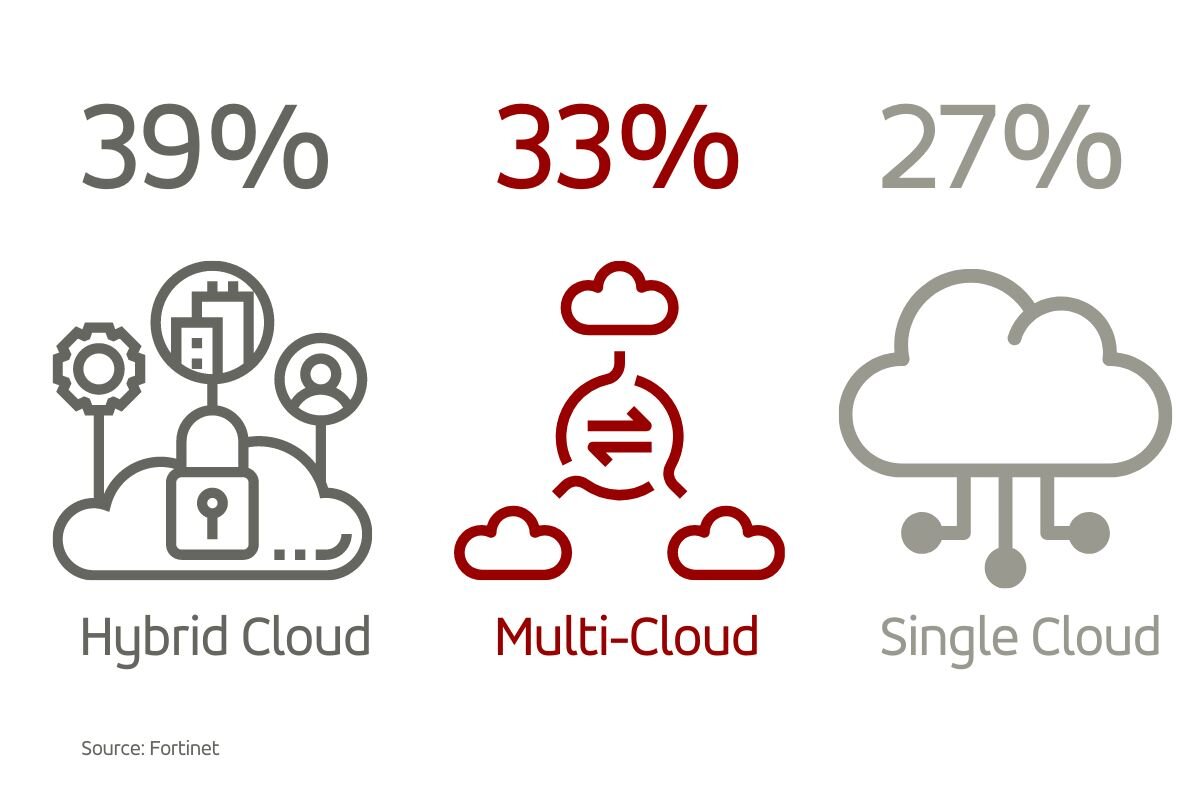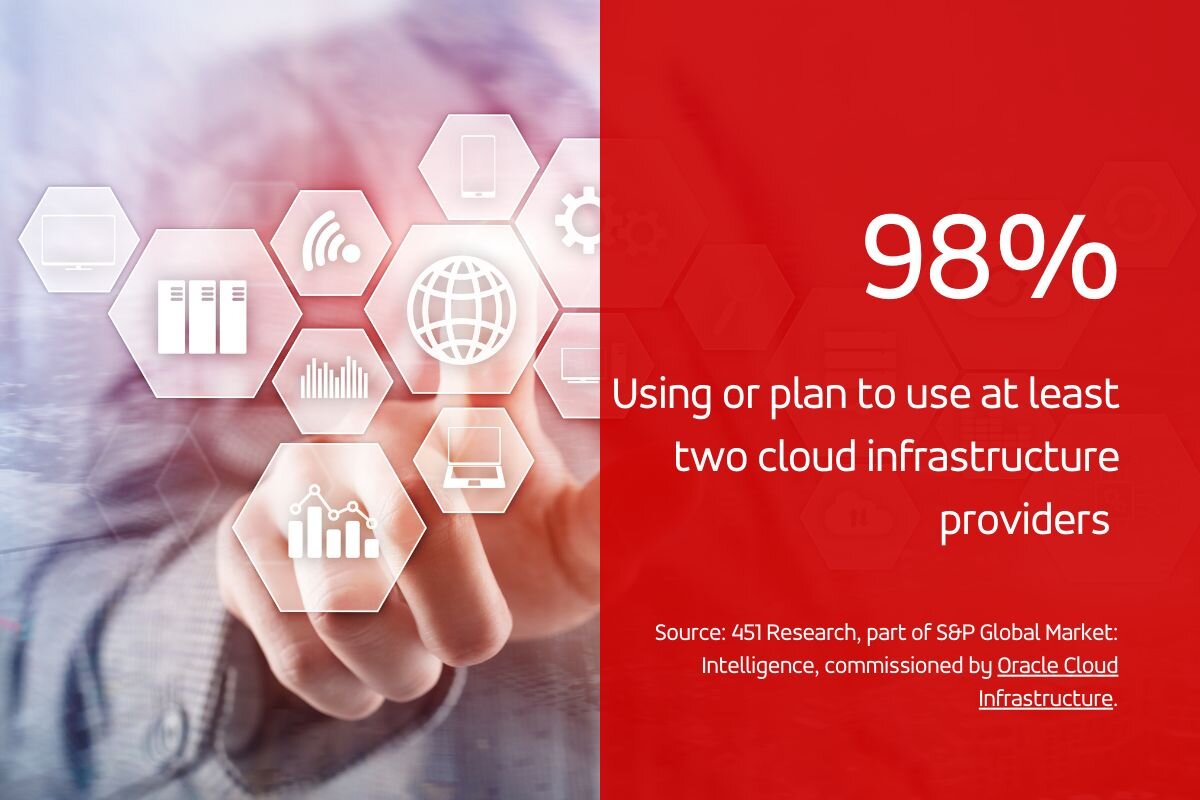Multi-cloud strategy part 1: Challenges and benefits
24.07.2023
Adopting a multi-cloud strategy has become increasingly popular among enterprises recently. Successful multi-cloud implementation requires careful planning that includes several key factors, benefits, and challenges that may also arise during implementation and ongoing management. Additionally, organizations should address key considerations which will help them mitigate or overcome the challenges associated with a multi-cloud environment.
This article is a part of our multi-cloud strategy blogpost series that aims to equip your organization with the tools and knowldge for successful cloud integration. In this particular blogpost, we are going to outline essential challenges the business can overcome and benefits it can unlock.
What is multi-cloud?
As organizations embark on their cloud journey, they often find themselves managing a multitude of cloud-based services across multiple providers. It has become the new norm for many enterprises. However, navigating this intricate terrain can be overwhelming, compounded by the fact that the term "multi-cloud" itself can be perplexing.
It is important to note that multi-cloud should not be confused with hybrid cloud. The technical definition of hybrid cloud involves the integration of traditional data centers with physical servers, private clouds with virtualized servers, and public cloud services provided by external service providers. On the other hand, multi-cloud simply refers to the utilization of multiple public clouds from various vendors to deliver an organization's IT services. In essence, an organization can have a multi-cloud setup without necessarily adopting a hybrid cloud architecture, although it is also possible to have a multi-cloud environment as part of a hybrid cloud infrastructure.

Challenges
While multi-cloud architectures offer tremendous potential, they also introduce a unique set of challenges for businesses to overcome. In this section of our blog, we will delve into some of the key obstacles faced by organizations as they navigate the complex and dynamic world of multi-cloud environments.
Inherent complexity
Dealing with two (or more) vendors is more complex than working with a single provider. Each vendor has different features, native tools, billing methods, APIs, and service-level agreements (SLAs). Coordinating processes between several platforms is also complicated. However, your organization can always turn the challenge into a benefit by implementing a cloud management platform or orchestration tool that provides a centralized interface to manage and automate tasks across multiple cloud platforms. Another solution is to adopt standardized APIs and protocols to facilitate seamless integration between different cloud providers. And last, but not least you can leverage containerization technologies like Docker and Kubernetes to abstract away underlying infrastructure differences and enable portability. More on this in the key considerations section of this blogpost.
Difficult cost control
Relying on two or more vendors makes it difficult to track costs and eliminate unwanted expenses. Cloud sprawl (non-utilized cloud instances or services) is a common reason for needlessly high monthly bills. Not to be in doubt, you can also turn this challenge around by implementing cost management tools that provide real-time visibility into resource usage and cost allocation across multiple cloud providers. Мany businesses also work with external software development partners that monitor and optimize your cloud services to identify opportunities for cost reduction and elimination of unused or underutilized resources.
More security risks
The more clouds you use, the greater your attack surface becomes. More providers mean more room for mistakes (misconfiguration, poor encryption, flaws in key management, insecure APIs, etc.), which creates more opportunities for data breaches and leaks. You can use cloud-native security services provided by the cloud providers, such as Identity and Access Management (IAM), Security Information and Event Management (SIEM), and Data Loss Prevention (DLP) tools to turn this challenge around.
Design difficulties
Creating apps that move data and workloads across environments is difficult when you operate in two (or more) cloud platforms. Integrations between platforms and systems are also challenging. Adopting a modular and microservices-based architecture can facilitate easier management and deployment across multiple cloud platforms. By breaking down applications into smaller, independent components, you can design them to be more portable, scalable, and adaptable to different cloud environments.
Choose cloud-agnostic technologies and frameworks that are compatible with multiple cloud platforms. This reduces the dependencies on provider-specific services and APIs, making it easier to design and migrate applications across different clouds. For example, using containers and container orchestration platforms like Kubernetes allows for portability and abstraction of underlying cloud infrastructure.
These are but a few of the strategies you can implement to overcome this challenge.
Skill gaps
Each new platform in a multi-cloud requires the company to hire new or educate existing employees in the skills needed to put the solution to optimal use.
You can also leverage external expertise. Consider partnering with external consultants or hiring cloud specialists who have expertise in multi-cloud environments. These experts can provide guidance, mentorship, and hands-on support to navigate the complexities of managing multiple clouds. They can also help identify skill gaps and provide training recommendations tailored to the organization's specific needs.
Keep in mind that every single organization operates in a different context and thus considerations, as well as challenges towards the successful integration of multi-cloud can vary. It is crucial to plan carefully and even consider bringing on board experienced partners or team members as already mentioned above.
Cloud Data Storage: Advantages Over On-premises Server
Benefits
Apart of challenges, a multi-cloud strategy also brings a range of advantages that organizations can leverage to optimize their cloud infrastructure and operations. Let's explore these benefits in detail:
Best of each cloud
One of the key benefits of a multi-cloud strategy is the ability to leverage the strengths and capabilities of different cloud providers. Each cloud provider has its own unique features, services, and strengths. By adopting a multi-cloud approach, organizations can choose the best cloud platform for each specific workload or application. For example, one cloud provider might excel in big data analytics, while another might offer superior machine learning capabilities. By utilizing multiple cloud providers, businesses can optimize their infrastructure and take advantage of the specific strengths offered by each provider.

Avoid vendor lock-in
Vendor lock-in occurs when a business becomes heavily dependent on a single cloud provider and faces difficulties in migrating to another provider or adopting different technologies. By embracing a multi-cloud strategy, organizations can avoid vendor lock-in. They have the freedom to select and switch between different cloud providers based on their evolving needs and preferences. This flexibility enables businesses to maintain control over their infrastructure, negotiate better pricing, and prevent being tied to a single provider.
Cost advantages
Multi-cloud strategies can lead to cost efficiency in several ways. Firstly, organizations can take advantage of price variations among different cloud providers to optimize costs. They can compare pricing models, negotiate better deals, and choose the most cost-effective option for each workload or application. Secondly, by distributing workloads across multiple clouds, businesses can prevent over-reliance on a single provider, reducing the risk of service disruptions.

Innovative technology
By adopting a multi-cloud approach, businesses gain access to a wider range of innovative technologies and services offered by different cloud providers. Each provider invests heavily in research and development, leading to the creation of cutting-edge solutions and features. By leveraging multiple clouds, organizations can tap into the latest advancements in cloud computing, artificial intelligence, machine learning, Internet of Things (IoT), and other emerging technologies. This enables them to stay ahead of the curve and drive innovation within their industry.
Advanced security and regulatory compliance
Multi-cloud strategies can enhance security and regulatory compliance. By leveraging multiple cloud providers, organizations can implement a defense-in-depth approach to security, spreading their data and workloads across different environments. This can mitigate the impact of potential security breaches or disruptions caused by a single provider. Additionally, businesses can select cloud providers with specific security certifications or compliance standards that align with their industry or geographic requirements. This ensures that data handling and regulatory obligations are met more effectively.
Cloud security: Protecting your data, applications, and infrastructure

Increased reliability and redundancy
Utilizing multiple cloud providers enhances reliability and redundancy. In the event of a service disruption or outage from one provider, organizations can seamlessly shift workloads to another provider, minimizing downtime and maintaining business continuity. By distributing workloads across multiple clouds and geographic regions, organizations can achieve higher levels of availability and resilience. Multi-cloud architectures often involve redundant infrastructure and data replication strategies, reducing the risk of data loss and ensuring continuous access to critical applications and services.
Accedia Spotted as a Bulgaria's Finest Cloud Consulting Company
In the end
In conclusion, the journey into the realm of multi-cloud strategy has revealed a dynamic landscape, offering both challenges and immense benefits that directly influence an organization's ROI. By harnessing the capabilities of multiple cloud providers, businesses gain a multitude of advantages, including infrastructure optimization, access to cutting-edge technology, improved security and compliance, and heightened reliability and redundancy.
Stay tuned for the second part of our blog series, in which we will further explore the crucial elements of a successful multi-cloud strategy. From key considerations to best practices and valuable lessons learned, we aim to equip businesses with the knowledge and insights needed to embrace the true potential of multi-cloud environments and maximize their ROI. Prepare to learn more transformative discoveries that will shape your multi-cloud journey into one of remarkable success.
In case you are worried you might miss the next part, sign up here and we will notify you when it is live!
Resources: